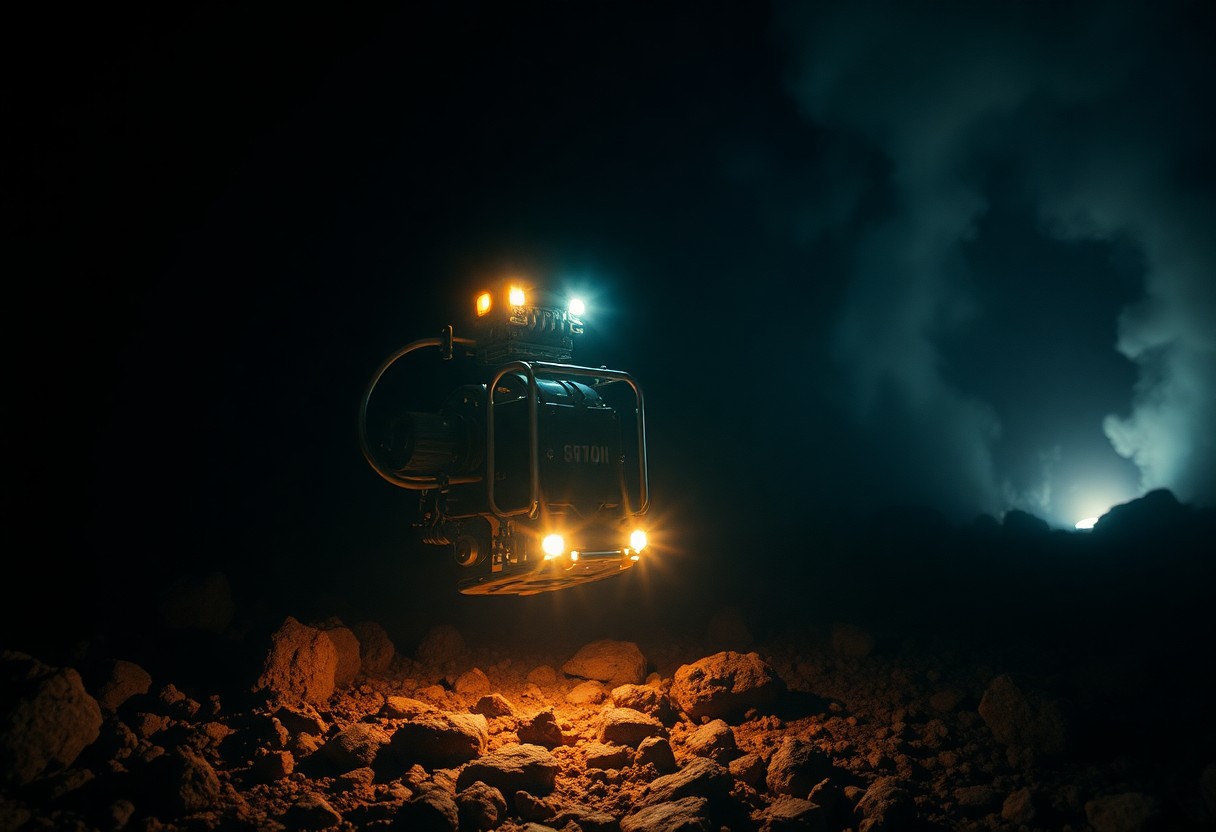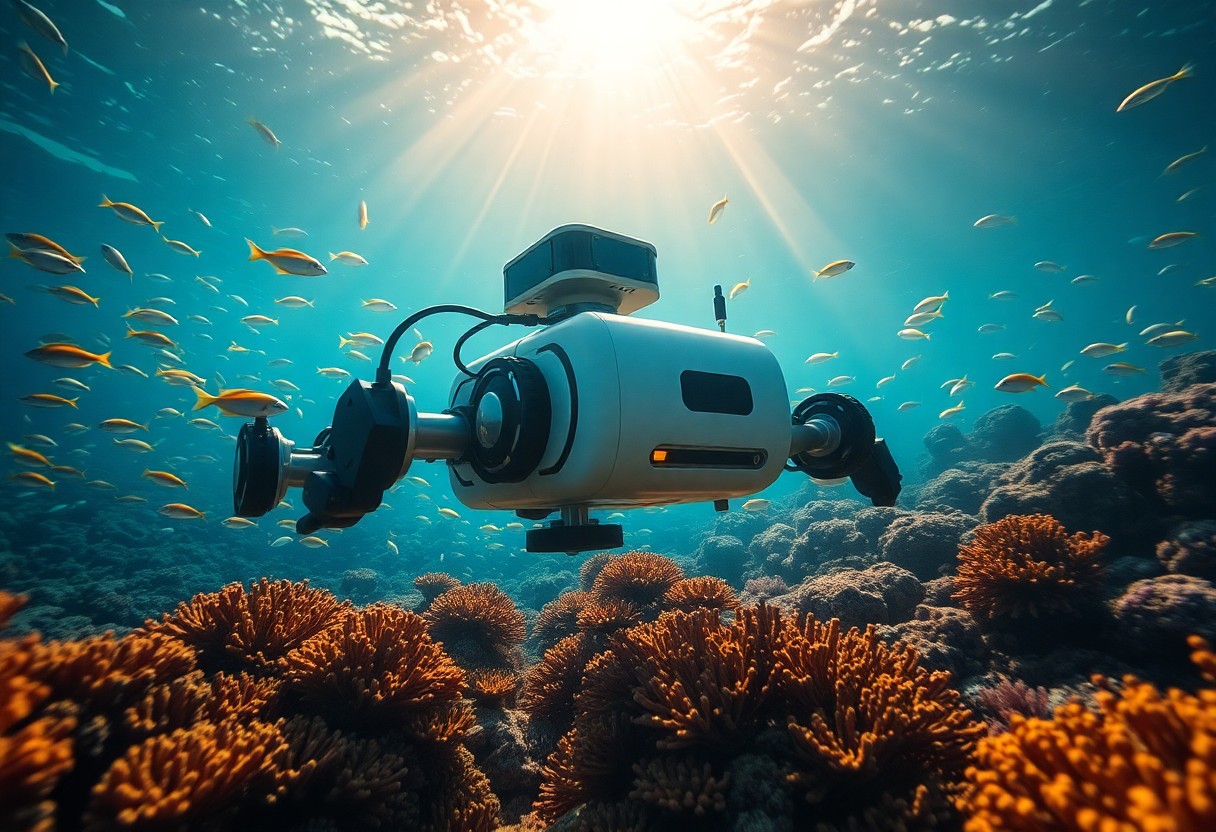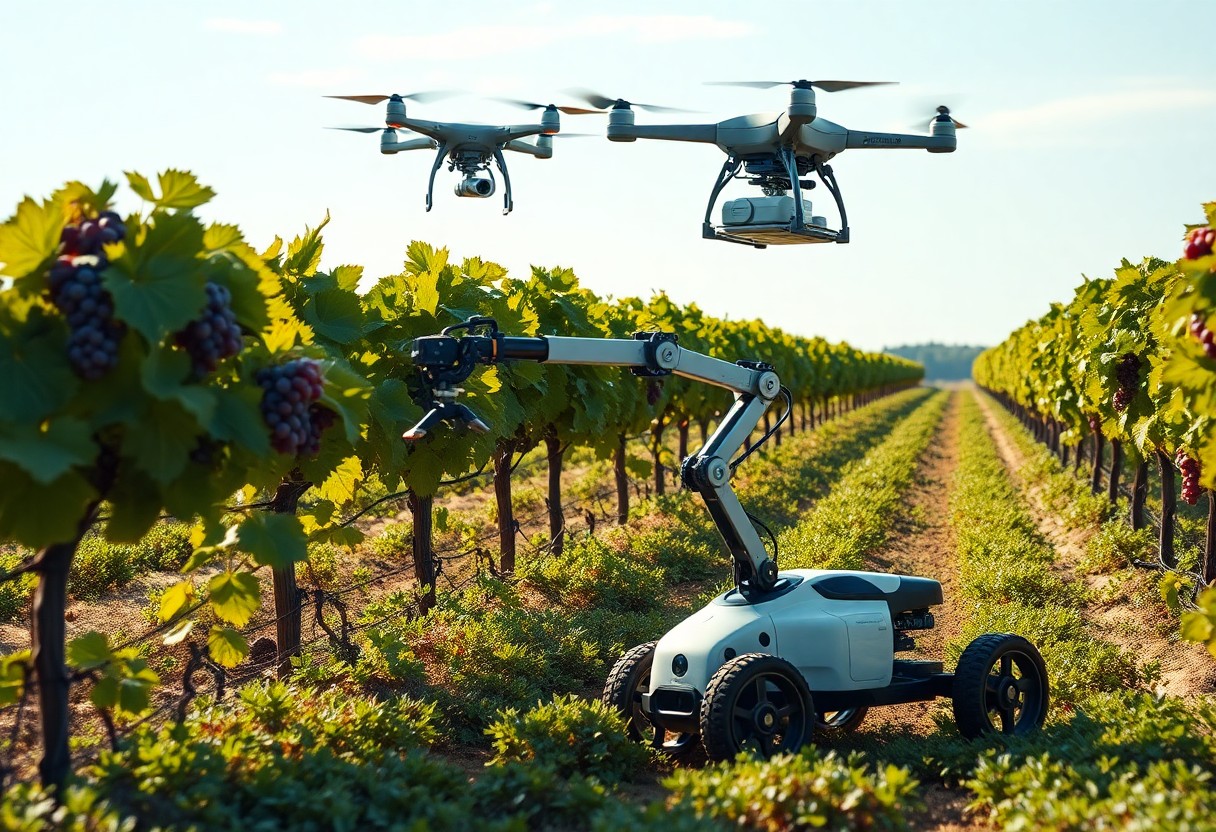There’s a fascinating world beneath the waves, and underwater robots are your key to unlocking its secrets. These advanced machines are designed to explore the ocean’s depths, capturing stunning imagery and gathering necessary data, all while navigating challenging environments. By exploring how these robots work and the innovations they bring to marine research, you can gain a deeper understanding of their impact on our exploration of underwater ecosystems and the mysteries they hold. Join us as we explore into the exciting realm of underwater robotics and its significance in ocean exploration.
Navigating Marine Frontiers: The Role of Underwater Robots
Underwater robots serve as your eyes and hands beneath the waves, navigating complex marine environments where human access is limited. They are equipped with advanced sensors and robotic arms, allowing them to collect data and samples from the ocean floor or observe marine life at unprecedented depths. These machines open up new highways for exploration, research, and ecological monitoring, significantly enhancing your understanding of the ocean’s vast frontiers.
Breakthrough Technologies
Innovations in robotics have led to the development of autonomous underwater vehicles (AUVs) and remotely operated vehicles (ROVs) that are revolutionizing ocean exploration. Equipped with state-of-the-art sonar, cameras, and manipulative technology, these breakthroughs allow for real-time data collection and navigation in harsh underwater conditions. Your underwater missions can now involve precision mapping of ocean floors or capturing high-resolution images of marine species.
Key Applications in Oceanography
Underwater robots play a vital role in oceanography by enabling extensive research on marine ecosystems, climate change, and geological processes. They contribute to mapping seafloor features, monitoring underwater volcanoes, and examining coral reefs, providing valuable insights that were once unreachable due to depth or environmental hazards.
In oceanography, underwater robots gather data vital for understanding global climate patterns, as they can measure temperature, salinity, and nutrient levels across various depths. Projects like the Ocean Observatories Initiative utilize these vehicles to monitor upwelling zones and migrating fish populations, revealing trends that inform conservation strategies. By deploying these robots, researchers can track changes over time, providing the critical data needed to forecast the impacts of climate change on marine biodiversity and habitat integrity. Your involvement in this cutting-edge research not only advances scientific knowledge but also supports the stewardship of the oceans for future generations.
Secrets of the Deep: The Data and Discoveries Unearthed
Exploring the ocean’s depths reveals a wealth of secrets, enriching our understanding of marine ecosystems. Underwater robots have revolutionized the way you gather data, capturing vivid images and collecting samples from the ocean floor. The results of these missions often lead to groundbreaking discoveries about underwater biodiversity, ancient geology, and climate patterns that influence life above water. Each dive uncovers a tapestry of interconnections, from previously uncharted species to historical climate changes, giving you insights into the delicate balance of ocean health.
Biodiversity Mapping and Conservation Efforts
Your journey into biodiversity mapping benefits enormously from underwater robots, which help identify and catalog marine species in their natural habitats. With advanced imaging technology, these robots provide critical data for conservation efforts, enabling you to visualize the impact of human activity on fragile ecosystems. By documenting species interactions and locations, underwater exploration paves the way for effective environmental protection strategies.
Geological and Climate Research Contributions
Underwater robots also play a pivotal role in geological and climate research, revealing hidden underwater landscapes and sediment formations influencing climate patterns. The data collected helps paint a clearer picture of historical climate changes, showcasing how the ocean’s depths have evolved over millennia.
Underwater robots facilitate unprecedented studies on the geological formations of the sea floor, such as hydrothermal vents and underwater volcanoes, which serve as key indicators of Earth’s climate history. For instance, analysis of sediment cores collected from deep-sea drilling has unveiled information about ancient climate shifts, underscoring the ocean’s role as a climate regulator. Understanding the connection between ocean floor geology and contemporary climate phenomena enables you to predict future changes and threats, thus equipping you with knowledge vital for addressing global warming and protecting marine environments.
Unveiling Operational Challenges: What Underwater Robots Must Overcome
Operating underwater presents unique challenges that must be tackled for successful exploration. From enduring extreme pressures to navigating the complex decision-making required in uncharted territories, underwater robots must continuously adapt and evolve. As they examine deeper into oceanic mysteries, technological precision, and resilience become vital for data acquisition and analysis. These challenges influence design, functionality, and ultimately the extent of knowledge you can gather from the depths.
Harsh Environmental Conditions
Underwater robots face inhospitable conditions, including crushing pressures, frigid temperatures, and corrosive saltwater environments. As you explore deeper regions, the pressure can exceed 1,000 times the atmospheric pressure at sea level, requiring robust materials and engineering designs. Compounding this challenge, low light levels hinder visibility, making advanced sensors and lighting systems imperative for navigation and data collection.
Technical Limitations and Innovations
While technological advancements have propelled underwater robotics, limitations remain in battery life, communication systems, and maneuverability. Currently, many underwater robots rely on bulky batteries that limit their operational time. Innovations such as energy-efficient designs, hybrid power systems, and improved materials aim to overcome these obstacles. Implementing smarter autonomous navigation systems enhances robots’ capabilities, allowing them to process environmental data in real-time, drastically improving their exploration potential.
Recent advancements in battery technology, such as lithium-sulfur and fuel cells, are promising solutions to extend the operational lifespan of underwater robots. These innovations can significantly reduce size and weight while maintaining or even enhancing energy efficiency. Alongside power improvements, the development of sophisticated imaging and sonar systems facilitates navigation and enhances data collection. Notably, deep-sea robots like Ocean Infinity’s “Phantom” are testing these innovations, with results showing increased operational viability and depth capabilities. Embracing these new technologies positions underwater robots to explore uncharted ocean territories more effectively, ensuring that your quests for knowledge yield benefits for science and research.

The Ethics of Ocean Exploration: Balancing Discovery and Preservation
Ethical considerations in ocean exploration demand a careful equilibrium between advancing scientific knowledge and safeguarding marine ecosystems. As underwater robots examine into the Earth’s last frontiers, you must weigh the potential benefits of discovery against the risks posed to vulnerable habitats. The information gathered can enhance conservation efforts, but reckless exploration could lead to irreversible damage, which prompts a dialogue on sustainable practices and responsible usage of technology.
Environmental Impact Considerations
Every exploration mission carries the risk of disturbing delicate marine environments. Your choice of methods and tools can significantly influence the extent of that impact. For instance, underwater robots equipped with sonar can map ocean floors without physical damage, but sediment disturbances from propellers can threaten species reliant on stable substrates. Balancing innovation with ecological considerations is vital to adhere to environmental standards.
Governance and Regulation of Deep-Sea Research
The governance surrounding deep-sea research remains fragmented and often lacks the enforceability needed to ensure responsible practices. Various international treaties and agreements exist, yet compliance is frequently voluntary, allowing for exploitation without accountability. As you navigate these regulatory waters, understanding your role and responsibilities becomes necessary, whether contributing to impactful research or advocating for stronger regulations that protect these fragile ecosystems.
Current governance frameworks, such as the United Nations Convention on the Law of the Sea (UNCLOS), serve as primary resources for mediating ocean use but often fail to address the specific challenges posed by autonomous underwater vehicles. You may find that many nations have different interpretations of rights and responsibilities over marine resources, creating inconsistencies in regulations that can hinder collaborative conservation efforts. The integration of stakeholder perspectives—including scientists, policymakers, and indigenous communities—could foster more robust approaches to deep-sea governance, ensuring that sustainable exploration aligns with ecological preservation.
The Future of Underwater Robotics: Trends and Predictions
Underwater robotics is rapidly evolving, with advancements in technology steering the field toward unprecedented capabilities. Future trends suggest a surge in the development of autonomous systems, which could work independently without human intervention, allowing for extensive data collection and exploration in hard-to-reach oceanic depths. Pair this with ongoing collaborations between scientists and industry leaders, and you have a landscape ripe for innovation, aiming to enhance environmental conservation and resource management.
The Rise of Autonomous Systems
Autonomous underwater vehicles (AUVs) are leading the charge in ocean exploration, equipped with sophisticated sensors and AI algorithms that enable them to navigate and gather data in real-time. As these systems become more reliable and efficient, you’ll find their applications stretching beyond research into areas such as underwater construction and environmental monitoring, making them indispensable tools in your quest for understanding the ocean.
Collaborations Between Science and Industry
Collaborations between academic institutions and industry have transformed underwater robotics into a dynamic field of innovation. In these partnerships, scientific researchers provide the foundational knowledge, while companies contribute cutting-edge technology and investment. This fusion not only accelerates product development but also creates educational opportunities, ensuring that the next generation of engineers and scientists is well-equipped for the challenges ahead in underwater exploration.
For instance, initiatives like the Ocean Exploration Cooperative Institute (OECI) bring together leading universities and technology firms to share resources and best practices for developing advanced underwater drones. These collaborations foster projects like the deployment of AUVs designed for marine biology research, which can map habitats while gathering vital ecological data. Such joint efforts expand the horizons of what you can achieve in ocean research, bypassing limitations that would exist in isolated endeavors and driving forward sustainable exploration practices that benefit both industry and scientific discovery.
To wrap up
From above, you can appreciate the vastness of the ocean, but it’s the underwater robots that truly unveil its mysteries. These innovative machines are your eyes and hands beneath the waves, allowing you to explore depths that were once unreachable. Whether for scientific research, environmental monitoring, or underwater archaeology, these technologies open up new frontiers in your understanding of marine ecosystems. As you continue to follow advancements in this field, you may find yourself inspired to contribute to the ongoing exploration of our planet’s oceans.







